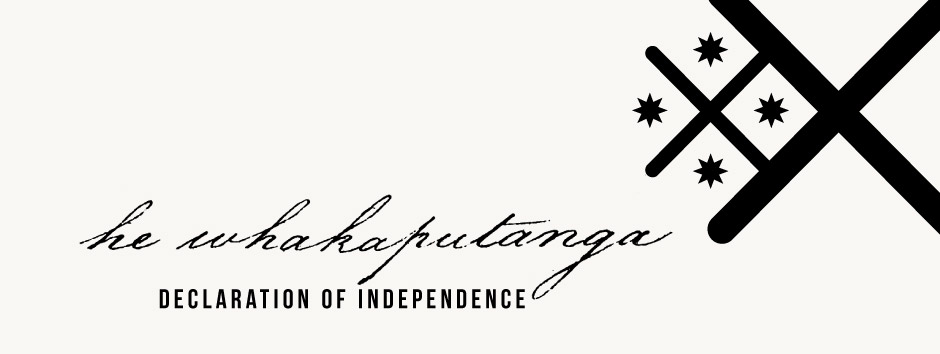Signing details
Tītore was a rangatira of considerable mana based at Kororāreka (Russell). His kinship connections, and his relationship with missionaries and traders, meant he was involved in many key events of the 1830s.
Tītore was the nephew of Tāreha, principal rangatira of Ngāti Rēhia. He was sometimes known as Tītore Tākiri, and his image has been confused with Te Toru of Waikare. He was the son of Hāpai and the grandson of Toko, and Hengi of Ngāti Rēhia was a senior relation. He was married to a sister of Hongi Hika and led many taua during the 1820s and 1830s; historian Kathleen Shawcross suggests that Tītore was the leading rangatira of Ngāpuhi’s northern alliance in the 1830s. William Colenso wrote that 'Titore was one of the most powerful and best of the many Ngapuhi chiefs of high rank – so much of Nature’s true nobility of manner and appearance about him; his voice, too, was mild, yet firm, possessing more of the suaviter [gentleness] than the fortiter [firmness].' [1]
Tītore was a key player during the ‘Girls’ War’ of 1830. Accounts differ on the cause, but on 6 March 1830 Tītore and others of the northern alliance engaged in a two-hour battle with the peoples of Kiwikiwi and Pōmare II. Once peace was made Tītore was granted Kororāreka as reparation for the death of his relation, Hengi. Before this he had been based below Whakataha pā near Te Waimate, which was sometimes referred to as ‘Tītore’s Mount’ by Pākehā.
In 1832 and 1833 he led major battles at Tauranga. Despite this, and despite his opposition to religious services being held at Kororāreka, missionaries considered Tītore a friend and ally – Reverend Henry Williams often wrote of him as being well disposed, and his children attended missionary schools.
Tītore was one of 13 northern rangatira who signed a letter to King William IV in 1831, seeking an alliance with Britain. In 1834 he sent the King a further letter and gifts, including wooden spars and a mere pounamu (greenstone club). In the 1834 letter, Tītore wrote: 'Should you and the French quarrel, here are some trees [topmasts] for your Battle Ships.' In return the King sent him a suit of armour, which is now in the care of the Museum of New Zealand Te Papa Tongarewa.
He signed He Whakaputanga on 28 October 1835. In March 1837 a major conflict erupted between Ngāpuhi hapū, led on one side by Tītore and on the other by Pōmare II. The fighting resulted in thirty to fifty deaths, including Te Māhurehure rangatira Pī, and Tenana of Ngāti Kuta. According to some accounts the conflict ended with Tītore’s death in early June 1837, but it is not clear whether he died from illness or battle wounds. Captain William Hobson, who was in the Bay of Islands at the time, had the HMS Rattlesnake fire a formal salute in Tītore’s honour.
Despite his death, Tītore still ‘signed’ Te Tiriti o Waitangi: Hākiro, the son of Tāreha and successor to Tītore, spoke on his behalf and signed the Waitangi sheet with the words ‘mo Titore kua mate’ (for Tītore, who has died).
[1] William Colenso, The Authentic and Genuine History of the Signing of the Treaty of Waitangi, New Zealand, February 5 and 6, 1840: Being a Faithful and Circumstantial, Though Brief, Narration of Events Which Happened on That Memorable Occasion: With Copies of the Treaty in English and Maori and of the Three Early Proclamations Respecting the Founding of the Colony, George Didsbury, Government Printer, Wellington, 1890, p.24.
[2] Quoted in Phil Parkinson, ‘Tuku: Gifts for a King and the Panoplies of Titore and Patuone’, Tuhinga, 23 (2012), p.57, Te Papa Museum of New Zealand.


Community contributions